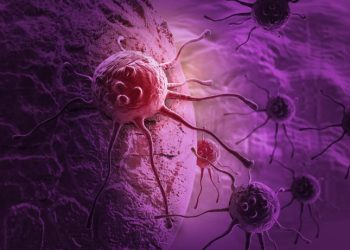Neuroendocrine tumors (also called NETs) grow from nerve cells that receive signals from the brain and make hormones to help the body function. These hormones control digestion, heart rate and sleep.
The signs and symptoms of a NET vary depending on where it starts, what type of hormone it makes and whether it grows quickly or not. OSUCCC – James offers several types of treatment for NETs.
Symptoms
The symptoms of neuroendocrine tumors (NETs) vary widely. They depend on where the tumor is and whether it makes hormones that cause specific symptoms. Most NETs make hormones that control normal body functions, such as digesting food and breathing. But these NETs can also release too many of these hormones, which causes problems such as flushing, breathing difficulties and a type of heart disease called carcinoid syndrome.
Neuroendocrine cells are found throughout the body. They get signals from your brain and make hormones that control things like digestion and sleep. Cancers start in neuroendocrine cells when they develop changes (mutations) that cause them to grow out of control and form a tumor. The most common types of NETs are those that start in the cells of your digestive tract, especially the stomach, small intestine and appendix. These are sometimes called carcinoid tumors. NETs can also form in the lungs and a gland behind your breast bone called the thymus. They are less common in other parts of the body, including the pancreas, kidneys and ovaries.
Most NETs grow very slowly. They don’t usually cause symptoms in the early stages. And when they do, the symptoms often resemble those of more common conditions. For example, a NET in the large bowel may cause abdominal pain that comes and goes, which can be mistaken for irritable bowel syndrome. NETs that occur in the lungs can produce symptoms that mimic those of other lung diseases, such as asthma or bronchitis.
Often, the first sign of a gastrointestinal NET is seeing blood in your stool. This is often caused by bleeding from the bowel or rectum, and it can reduce the number of red blood cells in your body (anaemia). Other symptoms include a feeling of fullness after eating, unexplained weight loss, fatigue and a rash that doesn’t go away.
If a neuroendocrine tumor is found early, it can be completely removed and cured. But even if it can’t be removed, the tumors can be treated with medicine to ease your symptoms. This can extend your survival and improve your quality of life.
Diagnosis
Neuroendocrine tumors grow in cells that make hormones. These are chemicals that control different actions in your body, including hair growth and sex drive. NETs can grow in places like your pancreas, a gland in your belly, or the lungs and thymus. Sometimes these tumors make too many hormones and cause symptoms, like a cough that won’t go away or weight loss you can’t explain. Some NETs are cancer, but most are not.
Doctors diagnose a NET by doing blood and urine tests, scans, and a biopsy, which is when doctors take a tiny piece of tissue from the tumor to check it for cancer cells. They also look at the hormones the tumor is making.
X-rays, CT scans and MRI scans can help find the tumor and see how big it is. They can also show if the tumor has spread. A blood or urine test can look for high levels of certain hormones that are made by a neuroendocrine tumor.
A hepatic artery embolization is a non-surgical procedure. A doctor puts a small tube (catheter) into an artery in your groin and moves it to an artery in your liver. Then they put a special medicine into the artery that supplies the liver tumor to kill it. Other treatments include medicine that blocks the production of a specific hormone and radiation therapy.
Depending on where your NET is and what symptoms it is causing, doctors will decide on the best treatment for you. They might also give you information about the type of NET you have, and its prognosis.
Surgery is one of the main treatments for NETs. Surgeons try to remove the tumor and as much of the surrounding tissue as possible. They might recommend other treatments to reduce or relieve your symptoms if the tumor can’t be removed completely. These might include medicines that block excess hormones, radiation therapy, or a new treatment called lutetium 177 dotatate (Lutathera). This treatment uses a type of radioactive medicine to kill the tumor cells. Your doctor will talk to you about what your options are and plan your care with you.
Treatment
Depending on the type and location of your tumor, treatment can vary. It can include medicine that stops your tumor from producing excess hormones, surgery to remove the tumor, and treatments that use radiation or heat to destroy the cancer cells. Our specialists use a multidisciplinary approach, working together to provide the best care for your condition.
Neuroendocrine tumors begin in nerve or gland cells that make and release hormones into the bloodstream. These cells are found throughout the body and have special markers, such as cell-type-specific peptide hormones and biogenic amines stored in electron-dense membrane-bound granules. They also have general marker proteins, including synaptophysin and chromogranin A, that help doctors identify them and distinguish them from other cell types.
In some cases, a doctor will look at the signs and symptoms you’re having to determine whether or not you have a neuroendocrine tumor. They might ask for a physical exam or order imaging tests, such as ultrasounds, CT scans and MRIs. These tests create pictures of your body, and some neuroendocrine tumors show up well on a special kind of imaging test called a PET scan. In this procedure, a provider injects a small amount of the radioactive substance MIBG (metaiodobenzylguanidine) into a vein and watches as it moves through your body to find the tumor cells. These cells take up the radioactive tracer more than healthy cells do, and your healthcare provider can then see them on a computer screen.
Your doctor may recommend a biopsy to remove a sample of your tumor for laboratory testing. This can confirm the diagnosis and help with treatment planning. The sample will be tested for a variety of substances that can indicate the type of tumor and how it might respond to treatment.
Surgery is often used to remove neuroendocrine tumors, when they can be safely removed. Surgeons might try to remove the whole tumor or as much of it as possible.
Other non-surgical methods can be used to treat neuroendocrine tumors that can’t be removed surgically, such as hepatic artery embolization. During this procedure, your doctor puts a catheter through an artery in your groin into an artery that supplies your liver to kill the tumor.
Prognosis
NETs are a very complex group of tumours. The exact prognosis will depend on the type of NET you have and where it is located in your body. It also depends on how fast or slowly the tumour grows and how it is treated.
The chance of a NET spreading to other parts of the body (metastasis) is also affected by the stage at which it was diagnosed and how far the cancer has spread. Staging and grading are important because they give your healthcare provider clues about the long-term outlook for you.
When a NET is first diagnosed, it’s not possible to tell how it will grow or what symptoms you may experience in the future. Often, it takes some time for the tumour to grow large enough to produce symptoms. This is why it’s important to make an appointment with your doctor as soon as you think something is wrong.
Your healthcare team will create your treatment plan based on the results of tests, the size and location of the tumour and how it responds to treatment. You might have surgery, or you may need targeted therapy. A type of targeted therapy called peptide receptor radionuclide therapy (PRRT) is used to kill neuroendocrine tumor cells by targeting the cells’ unique receptors.
You might need chemotherapy if the tumour has spread to other parts of your body or you have other health conditions that affect your risk of developing a NET, such as multiple endocrine neoplasia type 1 and von Hippel-Lindau syndrome.
Having a family history of neuroendocrine tumors can increase your chance of developing one. It can also help to be aware of any general health issues in your family and to get checked regularly.
The chance of survival will depend on your age and where the tumour is located. Between 60 and 75 out of 100 people with a type 2 stomach neuroendocrine tumor survive for 5 years or more. This is based on European studies of people with this type of NET. The 5 year survival rate for a type 4 stomach neuroendocrine tumor is less than 50 out of 100.









